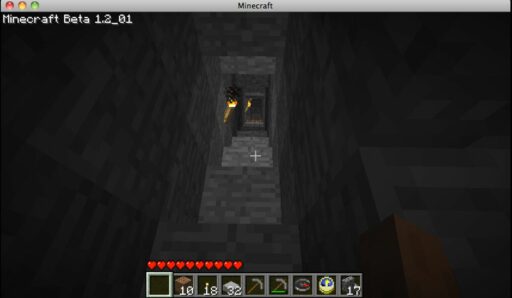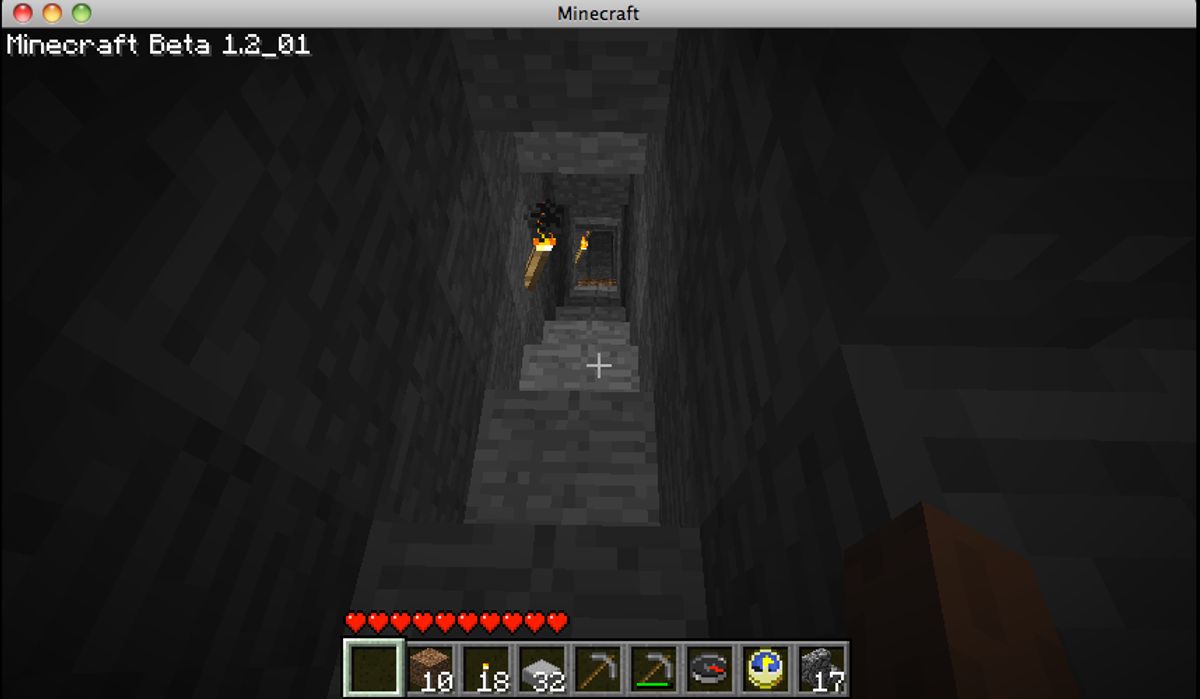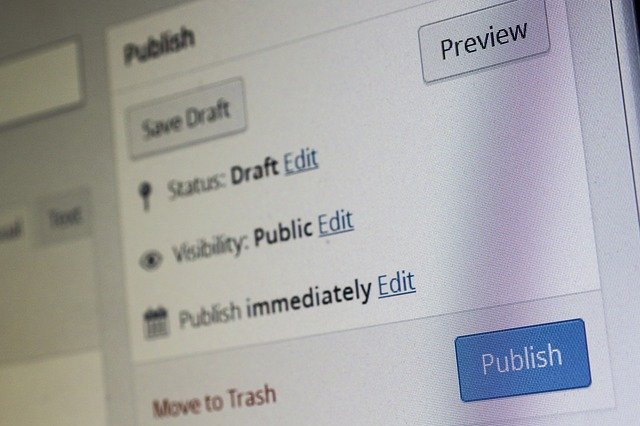Table of Contents
Minecraft Data Packs offer a unique opportunity for players to customize and enhance their gaming experience. They allow for the addition of new features, mechanics, and content without the need for mods. This article provides a comprehensive introduction to Minecraft Data Packs, guiding you through understanding, creating, and mastering these powerful tools. Whether you’re a seasoned Minecraft enthusiast or new to the game, this article will help you unlock the full potential of Data Packs.
Key Takeaways
- Minecraft Data Packs are a versatile tool for customizing gameplay, adding new features, and enhancing the player experience without mods.
- Creating a Data Pack involves setting up a development environment, understanding the basic structure, and writing simple modifications.
- Advanced features of Data Packs include functions, loot tables, custom crafting recipes, advancements, and challenge mechanics.
- Testing and debugging are crucial steps in Data Pack development, with a focus on troubleshooting common issues and ensuring multiplayer compatibility.
- Sharing and distributing Data Packs involves packaging for distribution, following best practices for sharing platforms, and engaging with the Minecraft community.
Understanding Minecraft Data Packs

What Are Data Packs and How Do They Work?
Minecraft data packs are a powerful tool for players to customize their gameplay experience. Data packs enable modifications to the game without altering the core software, allowing for a wide range of changes from simple tweaks to complex new mechanics. They work by bundling together JSON files, Minecraft commands, and other assets within a specific file structure that Minecraft recognizes and loads when the game starts.
Data packs can vary greatly in complexity and purpose. Here’s a brief overview of what they can include:
- New advancements
- Custom recipes
- World generation changes
- Loot table modifications
- Custom functions
Data packs are not just about adding new content; they can also be used to modify existing gameplay elements to create a fresh experience.
With the rise of community-driven content, data packs have become an essential aspect of the Minecraft ecosystem. A website page often covers topics on internet, SEO, and Minecraft data packs, highlighting the diverse categories like AI, data, web development, and tools that intersect with the game’s modding community.
The Importance of Data Packs in Customizing Gameplay
Data packs empower Minecraft players to tailor their gaming experience to their personal preferences and playstyle. They serve as a cornerstone for customization, allowing for the modification of game mechanics, introduction of new challenges, and even complete transformation of the game’s aesthetic. This level of personalization is not just about altering the look of the game, but also about crafting unique gameplay experiences.
The versatility of data packs is evident in the variety of modifications they enable. From simple changes like adjusting the game’s difficulty or behavior of mobs, to more complex alterations such as creating new dimensions or custom events, data packs offer a spectrum of possibilities:
- Comprehensive Exploration
- Real-Time Editing
- Convenient Exporting
- Streamlined Workflow
Moreover, data packs can significantly enhance the efficiency of the creative process. The mod’s robust editing tools allow for real-time editing within the game environment, which is a game-changer for creators who value productivity and workflow efficiency.
Data packs are not just tools for creativity; they are the bridge between the standard game and a personalized Minecraft universe.
When considering the popularity of data packs, it’s clear that they are a vital part of the Minecraft community. Creators like EvilWire have contributed significantly to this ecosystem, offering a range of data packs that push the boundaries of what’s possible in the game.
Exploring Popular Data Packs by Creators Like EvilWire
The world of Minecraft data packs is vast and diverse, with creators like EvilWire leading the charge in innovative and engaging content. EvilWire’s data packs often introduce new challenges and twists to the game, enhancing the survival experience and invoking nostalgia for the early days of Minecraft.
One of EvilWire’s notable creations is The Eerie Fog, which alters the survival mode to resemble the alpha or beta versions of Minecraft, where the night is a real threat and the fog gives a constant eerie feeling of being watched. This data pack has been well-received by the community, with thousands of downloads and high engagement.
The popularity of data packs like these showcases the community’s appetite for new experiences and the importance of creators in enriching the Minecraft universe.
Here’s a quick overview of some of EvilWire’s data packs:
- The Eerie Fog: A survival challenge with an ominous fog.
- Herobrine Datapack: Brings the legendary Herobrine into the game.
- Daladas of the Fates: Adds unique content beyond the standard gameplay.
Each data pack offers a distinct twist on gameplay, ensuring that there’s always something new to discover in the world of Minecraft.
Creating Your First Data Pack

Setting Up Your Development Environment
Before diving into the creation of your first Minecraft data pack, it’s essential to set up a proper development environment. Start by choosing a code editor that you’re comfortable with; popular options include Visual Studio Code, Atom, or Sublime Text. These editors offer syntax highlighting and other helpful features that make coding easier.
Next, familiarize yourself with the basic file structure of a data pack. A typical data pack contains the following directories and files:
pack.mcmeta: The root file containing metadata about your data pack.data/: This directory holds the namespaces for your data pack.data/<namespace>/: Within this, you’ll have folders for functions, loot tables, recipes, and more.
Ensure that your data pack’s folder structure is correct; this is crucial for Minecraft to recognize and load your pack properly.
Lastly, consider using version control systems like Git to manage your data pack’s versions and changes. This can be especially helpful if you plan to collaborate with others or want to keep a history of your modifications. Remember to test your data pack frequently during development to catch any issues early on.
Basic Structure and Components of a Data Pack
A Minecraft data pack is composed of a simple, yet specific structure. At its core, a data pack contains a pack.mcmeta file, which includes metadata about the data pack such as its name and version. The data folder is the heart of the pack, where you’ll organize your custom content into namespaces to avoid conflicts with other data packs or the game’s default assets.
The basic components of a data pack include:
functions: for custom commands and game logicloot_tables: to customize loot dropsadvancements: for creating new achievementsrecipes: to add or alter crafting recipesstructures: for pre-defined buildstags: to group items, blocks, or functions
Remember, the namespace you choose is essential as it serves as a unique identifier for your content. It’s recommended to use your username or another unique string to prevent clashes.
Each component serves a distinct purpose and allows for a wide range of customization options. By understanding and utilizing these components effectively, you can create a data pack that significantly enhances the Minecraft experience.
Writing Your First Simple Modifications
After setting up your development environment and understanding the basic structure of data packs, it’s time to dive into writing your first simple modifications. Start by customizing the world’s loot tables, which dictate the items that mobs drop when defeated or items found in chests scattered across the world.
- Identify the loot table you want to modify.
- Use JSON to define the new loot properties.
- Test the changes by reloading the data pack and checking the in-game results.
Remember, small changes can significantly impact gameplay. Always test modifications in a controlled environment before sharing.
Next, consider altering the game’s mechanics slightly to introduce a new challenge or convenience. For example, you could change the recipe for crafting torches to require a different material, or modify the behavior of an enemy to make it more challenging. These initial forays into data pack creation are crucial for learning the ropes and gaining confidence in your abilities to craft more complex modifications in the future.
Advanced Data Pack Features

Utilizing Functions and Loot Tables
In the realm of Minecraft data packs, functions and loot tables are powerful tools that enable creators to customize the game’s mechanics to their liking. Functions allow for the execution of a series of commands, which can be triggered by various events in the game. Loot tables, on the other hand, dictate the items that entities drop when defeated or the loot found in chests scattered across the world.
To effectively use functions, one must understand the basic command structure and how to chain commands for desired outcomes. Here’s a simple list to get started:
- Define the function’s objective.
- Write individual commands.
- Test each command in isolation.
- Combine commands in a
.mcfunctionfile. - Link the function to an in-game event.
Loot tables are equally important, as they can greatly enhance the player’s experience by providing rewards that are balanced and fitting for the challenge presented. Crafting a loot table involves specifying conditions, rolls, and entries that determine the probability and quantity of loot.
Remember, the key to mastering functions and loot tables is experimentation and iteration. Start simple, then gradually incorporate more complexity as you become comfortable with the basics.
Custom Crafting Recipes and Advancements
Minecraft’s data packs empower players to introduce new crafting recipes, adding a personalized touch to the game. Crafting recipes are defined in JSON files, which specify the pattern and ingredients needed. Advancements, on the other hand, are custom achievements that guide players through the data pack’s content, rewarding them for exploring and mastering new features.
To create a custom crafting recipe, start by defining the pattern and ingredients in a JSON file within the data pack. Then, test the recipe in-game to ensure it works as intended.
Here’s a simple checklist to follow when adding custom recipes:
- Determine the desired outcome of the recipe.
- Choose a crafting pattern that makes sense for the item.
- Collect the necessary ingredients and their data values.
- Write the JSON file with the correct syntax.
- Place the file in the appropriate data pack directory.
Advancements can be used to introduce players to these new recipes, creating a sense of progression and achievement. By carefully designing both elements, creators can significantly enhance the Minecraft experience.
Implementing Challenge Mechanics in Data Packs
Incorporating challenge mechanics into your data pack can significantly enhance the player’s experience by introducing new obstacles and goals. One innovative example is the ‘SPLINTERS!’ Data Pack, which adds a simple yet impactful twist to the game: players receive a splinter when attempting to punch a tree without an axe. This small change encourages players to rethink their early-game strategies and adds a layer of realism to the survival experience.
To implement such mechanics, you’ll need to understand the various triggers and conditions that can be used within Minecraft’s command system. Here’s a basic list of steps to get you started:
- Identify the challenge mechanic you want to introduce.
- Determine the triggers (e.g., player actions, environmental factors).
- Define the consequences or effects of the mechanic.
- Write the necessary commands and functions.
- Test and refine the gameplay experience.
Remember, the goal is to create engaging and fun challenges that are well-integrated into the gameplay, not to frustrate players with excessive difficulty or complexity.
When designing your challenge mechanics, consider the balance and fairness of the game. A well-designed challenge can lead to a more rewarding and memorable gaming experience. For inspiration, look to popular data packs by creators like EvilWire, who have mastered the art of adding intriguing challenges to the game.
Testing and Debugging Your Data Pack

Common Issues and How to Troubleshoot Them
When testing and debugging your Minecraft data pack, you may encounter a variety of issues that can affect your gameplay experience. Common problems include syntax errors, misconfigured JSON files, and unexpected behavior in game mechanics. To troubleshoot these issues effectively, it’s important to adopt a systematic approach.
Firstly, ensure that your data pack is correctly installed and recognized by the game. If the data pack is not loading, check the pack.mcmeta file for any syntax errors and verify that the file structure adheres to the required format. For issues related to game mechanics, such as commands not executing as expected, use the in-game debug screen (F3) to monitor real-time feedback and error messages.
When dealing with complex data packs, it’s crucial to isolate the problem by testing individual components separately. This can help identify the specific area where the error originates.
Below is a list of common troubleshooting steps to consider:
- Review the data pack’s code for typos or logical errors.
- Validate JSON files with a JSON linter to catch formatting issues.
- Test commands and functions in isolation to pinpoint errors.
- Use version control systems like Git to track changes and revert to previous stable versions if necessary.
- Consult community forums and resources for solutions to similar problems.
Remember, patience and persistence are key when debugging. With each challenge you overcome, you’ll gain valuable insights and become more adept at creating robust data packs.
Multiplayer Testing: Ensuring Compatibility and Stability
Ensuring that your data pack functions correctly in a multiplayer environment is crucial for a seamless gaming experience. Testing in multiplayer should be thorough, as issues that don’t appear in single-player may arise when multiple players interact with the game world. Start by setting up a dedicated test server or using a local network to simulate a multiplayer scenario.
- Verify that all features work as intended for each player.
- Check for synchronization issues between players.
- Monitor server performance to ensure that the data pack does not cause lag.
- Test for bugs that may only occur in a multiplayer setting.
Remember, patience is key. It takes time for events to unfold and for potential issues to become apparent. Multiplayer testing is not just about functionality, but also about the stability and performance under various conditions.
After initial testing, consider opening your server to a small group of beta testers. This can provide valuable feedback and help identify issues that you may have missed. Keep a log of all reported bugs and regularly update your data pack to address these concerns. By doing so, you’ll contribute to a more stable and enjoyable multiplayer experience for all players.
Gathering Feedback and Iterating on Your Data Pack
Once your Minecraft data pack is in the hands of players, gathering feedback is crucial to its improvement and success. Utilize platforms like the Minecraft Feedback site, where players can split their comments into categories such as commands, scripting, and mods, ensuring that feedback is organized and actionable.
Feedback is a gift. It’s an opportunity for improvement and innovation.
Consider creating surveys or focus groups to delve deeper into player experiences. This direct approach can yield insights into player preferences and pain points, which are invaluable for refining your data pack.
Remember to iterate on your data pack based on the feedback received. This process might involve multiple cycles of testing, tweaking, and re-releasing. Below is a list of steps to guide you through this iterative process:
- Review feedback from various sources
- Identify common issues and suggestions
- Prioritize changes based on impact and feasibility
- Implement the changes in your data pack
- Release an updated version and repeat the feedback cycle
Sharing and Distributing Your Data Pack

Packaging and Exporting Your Data Pack for Distribution
Once you’ve perfected your Minecraft data pack, it’s time to share your creation with the world. Packaging your data pack correctly is crucial for ensuring that it can be easily imported and used by other players. The process involves consolidating your data pack files into a single ZIP file, which should include the data and pack.mcmeta files at the root.
To streamline the packaging process, consider using tools that offer convenient exporting functionality. These tools can enhance productivity and simplify the creation process, allowing you to focus on the creative aspects of your data pack.
Remember, a well-packaged data pack not only reflects your professionalism but also significantly improves the user experience.
Here’s a quick checklist to ensure your data pack is ready for distribution:
- Verify that all necessary files are included and properly named.
- Test the data pack thoroughly to catch any last-minute bugs.
- Compress the data pack folder into a ZIP file, maintaining the correct structure.
- Name the ZIP file appropriately, reflecting the version and content of your data pack.
For example, the naming convention for data packs can be seen in the following table, which shows the number of posts for different versions:
| Minecraft Version | Data Pack Posts |
|---|---|
| 1.20.2 | 510 |
| 1.20.1 | 506 |
| 1.19.4 | 966 |
| 1.19.2 | 586 |
| 1.18.2 | 600 |
| 1.16.5 | 294 |
| 1.15.2 | 84 |
This table can guide you in naming your data pack file, indicating the popularity and relevance of different versions.
Best Practices for Sharing on Platforms Like Planet Minecraft
When sharing your Minecraft Data Pack on platforms like Planet Minecraft, it’s crucial to present your creation in the best light possible. Start by crafting a compelling title and description that highlight the unique features and benefits of your data pack. Use keywords that potential users might search for to increase visibility.
Here are some best practices to consider:
- Ensure your data pack is compatible with the latest version of Minecraft.
- Provide clear installation instructions and user guidelines.
- Include a changelog to document updates and improvements.
- Engage with the community by responding to comments and feedback.
Remember, the more professional and polished your presentation, the more likely it is to stand out in a crowded marketplace.
Lastly, take advantage of the forums to discuss your data pack, get ideas, and recruit help. The Planet Minecraft community is a valuable resource for sharing resources, tutorials, and tips.
Engaging with the Community and Collaborating with Other Creators
Engaging with the Minecraft community and collaborating with other creators can significantly amplify the reach and impact of your data pack. Building relationships with fellow creators can lead to joint projects, cross-promotion, and shared learning experiences. Here are some ways to foster community engagement and collaboration:
- Participate in forums and discussion groups related to Minecraft data packs.
- Attend virtual or in-person Minecraft events and workshops.
- Offer to collaborate on data packs with creators whose work you admire.
- Provide constructive feedback on others’ data packs and be open to receiving it on yours.
Remember, the goal is to create a positive and supportive environment where creativity thrives.
By sharing your work and insights, you not only contribute to the community but also gain visibility for your data pack. This can lead to opportunities for feedback, improvement, and even new project ideas. The community’s collective knowledge is a powerful resource; tap into it to refine your craft and discover new possibilities.
Conclusion
As we’ve explored the intricate world of Minecraft Data Packs, it’s clear that they offer a unique avenue for creativity and customization within the game. From the eerie ambiance of ‘The Eerie Fog’ to the legendary tales of ‘Herobrine Datapack’, these packs transform the gaming experience. The installation process is straightforward, and with a plethora of versions available, there’s a data pack for every Minecraft adventure. Tools like the Resource Explorer Mod further simplify the creation and navigation of resources, empowering both seasoned creators and newcomers to master the craft of resource pack creation. Whether you’re looking to enhance your gameplay or share your creations with the community, Minecraft Data Packs provide the tools and flexibility to make your vision a reality. Embrace the challenge, and let your imagination run wild in the vast world of Minecraft.
Frequently Asked Questions
What are Minecraft Data Packs?
Minecraft Data Packs are user-created files that enhance and customize the gameplay by adding new features, mechanics, and content to the game without the need for mods.
How do I install a Data Pack?
To install a Data Pack, download the pack and place it in the ‘datapacks’ folder of your Minecraft world. Then, use the ‘/reload’ command in-game to apply the pack.
Can Data Packs be used in multiplayer?
Yes, Data Packs can be used in multiplayer. However, it’s important to test them thoroughly as they may cause bugs or not be fully compatible with multiplayer gameplay.
What kind of modifications can I make with a Data Pack?
With Data Packs, you can create custom crafting recipes, advancements, functions, loot tables, and even implement challenge mechanics to tailor the gameplay experience.
Where can I share my created Data Packs?
You can share your Data Packs on platforms like Planet Minecraft, where you can engage with the community and collaborate with other creators.
Are there any notable Data Packs by creators like EvilWire?
Yes, creators like EvilWire have made popular Data Packs such as ‘The Eerie Fog’ and ‘Herobrine Datapack’ which add unique challenges and content to the game.





